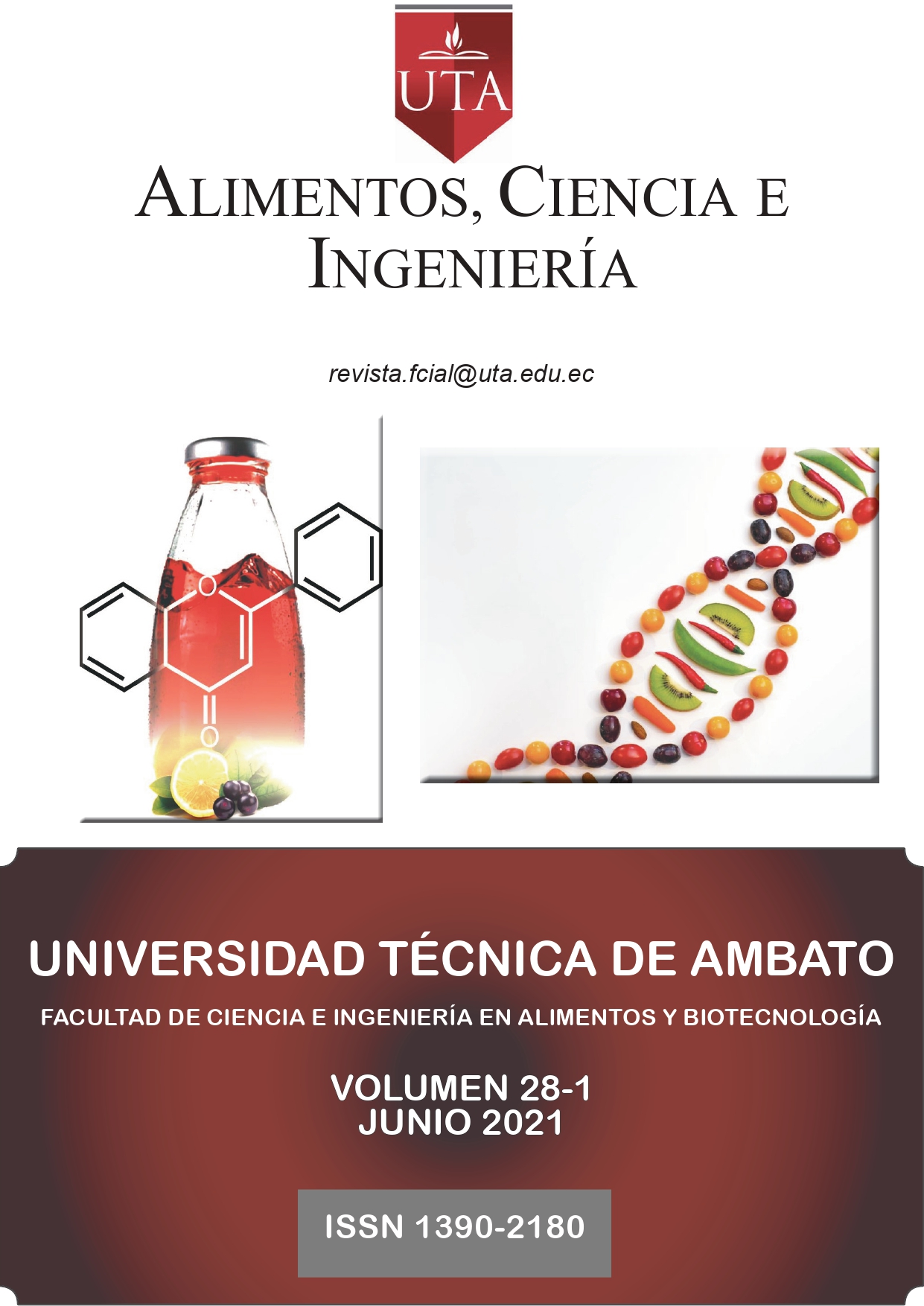TECHNOLOGIES FOR THE DEVELOPMENT OF BIOPOLYMERS, AS AN ALTERNATIVE IN THE SUBSTITUTION OF PLASTIC (PET)
Main Article Content
Abstract
The excessive use of PET (polyethylene terephthalate) plastic and its harmful environmental impact has caused an increasing demand for sustainable alternatives for the production of bioplastics, for this reason it is essential to determine materials that guarantee the required physical properties, promoting the research and development of new environmentally friendly products. Biopolymers produced from starches are biodegradable compounds that can be used for the production of product packaging due to the characteristics they present, which guarantee health, quality, and conservation. Which, investigations have been carried out to apply different technologies, for the use of potato starch, cassava, corn among others.
Downloads
Article Details

This work is licensed under a Creative Commons Attribution-NonCommercial 4.0 International License.
Aquellos autores/as que tengan publicaciones con esta revista, aceptan los términos siguientes:
a. Los autores/as conservarán sus derechos de copiar y redistribuir el material, bajo los términos estipulados en la Licencia de reconocimiento, no comercial que permite a terceros compartir la obra bajo las siguientes condiciones:
Atribución: debe dar el crédito apropiado, proporcionar un enlace a la licencia e indicar si se realizaron cambios. Puede hacerlo de cualquier manera razonable, pero no de ninguna manera que sugiera que el licenciante lo respalda a usted o su uso.
No comercial: no puede utilizar el material con fines comerciales.
Sin restricciones adicionales: no puede aplicar términos legales ni medidas tecnológicas que restrinjan legalmente a otros hacer cualquier cosa que la licencia permita.
References
Agulera Moscoso, B., Albisua Bermudez, Alvarez Moro, A., & Rodriguez Gopar, A. (2018). Obtención de productos alternativos y eco amigables. Ciencias e Ingenierías, 2-4.
Alarcón Aranguren, L. M., & Barajas Sepúlveda, D. F. (2013). Biopolímeros: una alternativa para la elaboración de empaques agroindustriales. Revista de Investigaciones, 37-43.
Alarcon Cavero, H. A., & Arroyo Benites, E. (2016). EVALUACIÓN DE LAS PROPIEDADES QUÍMICAS Y MECÁNICAS. Scielo, 318-323.
Arrieta , A., & Palencia , M. (2016). Estudio Electroquimico de un Biopolimero compuesto PPy/Almidon. LatinAm. Metal, 2-10.
Avellan , A., Diaz , D., Zambrano Maria , Zamora , Y., & Riera , M. A. (2019). Obtencion de Bioplastico a aprtir de almidon de maiz. Revista Colón Ciencias, Tecnología y Negocios, 5-11.
Avila , H., Espilco, M., Medina , A., Reyes , M., Rojas , J., & Villanueva , J. (Diciembre de 2014). Tendencias Tecnológicas en los Biopolímeros y. ELECTRÓNICA – UNMSM, 17(2), 107-111.
Barrietos Paras , J. (2019). Plástico: El desecho interminable, ¿jamás degradable? ACADEMIA DE CIENCIAS DE MORELOS, 26-27.
Caceres Murga , G., Cordori Corimayhua, P., Llanos Humire, S., Mamani Rodriguez, N., Sanchez Chavez, F., & Serruto Medina , G. (2019). Plasti – Quito. Revista de Divulgación , 80-82.
Carter , C., & Miller, H. (30 de Julio de 2012). Corn for Food, Not Fuel . Obtenido de The New York Times: https://www.nytimes.com/2012/07/31/opinion/corn-for-food-not-fuel.html?searchResultPosition=2
Cornejo Reyes, G. V., Marinero Orantes, E. A., Funes Guadrón, C. R., & Toruño, P. J. (2020). Biopolímeros para uso agroindustrial: Alternativa sostenible para la elaboración de una película de almidón termoplástico biodegradable. Revista Iberoamericana de Bioeconomia y Cambio Climático, 1360-1382.
Encalada, K., Aldas , M., Proaño , E., & Valle , V. (2018). Una revisión sobre biopolímeros con base en almidón y su biodegradabilidad. Revista Ciencia e Ingeniería, 39(3), 246-258.
Hernández Silva, M. L., & Guzmán Martínez, B. (2009). BIOLPOLÍMEROS EMPLEADOS EN LA FABRICACIÓN DE ENVASES PARA ALIMENTOS. SCIELO, 107-129.
Hernandez, M., & Guzman, B. (2009). Biopolimeros empleados en la fabricacion de envases para alimentos. Publicaciones e Investigacion, 104-129.
Navia, D. P., Villada , H. S., & Ayala, A. (2013). EVALUACIÓN MECÁNICA DE BIOPLASTICOS SEMIRRÍGIDOS ELABORADOS CO HARINA DE YUCA. SCIELO, 78-84.
Ortiz , V., Velasco, R., Fernandez , A., Enriquez , M., & Roa , D. (2015). OBTENCIÓN DE UNA PELÍCULA A BASE DE ALMIDÓN HIDROXIPROPILADO PRODUCIDA POR EXTRUSIÓN SOPLADO. Biotecnología en el Sector Agropecuario, 13(1), 92-98.
Río, C. (2016). El polietilén tereftalato (PET) como envase de aguas minerales. Bol Soc Esp Hidrol Med, 182-190.
Ríos, Á., Álvarez López , C., Cruz Riaño, L. J., & Restrepo Osorio, A. (2017). Revisión: fibroína de seda y sus potenciales aplicaciones en empaques biodegradables para alimentos. SCIELO, 9-15.
Vasquez , A., Ore, H., & Salazar, C. (2020). Evaluación de parámetros óptimos para mejorar la resistencia de biopolímero producido. Revista Pakamuros, 8(1), 26-33.
Villada, H., Acosta, H., & Velasco, R. (2007). Biopolimeros Naturales usados en empaques biodegradables. Temas Agrarios, 5-13.


